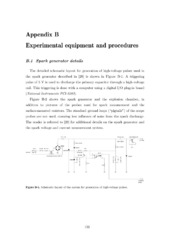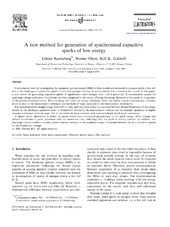| dc.contributor.author | Randeberg, Erlend | eng |
| dc.date.accessioned | 2006-09-12T11:15:24Z | |
| dc.date.available | 2006-09-12T11:15:24Z | |
| dc.date.issued | 2006-05-30 | eng |
| dc.identifier.isbn | 82-308-0185-1 (Print version) | en_US |
| dc.identifier.uri | https://hdl.handle.net/1956/1868 | |
| dc.description.abstract | This thesis describes a study of the minimum ignition energy (MIE) of easily ignitable dust clouds in air. The MIE is a central parameter when assessing the risk involved when handling combustible dusts. Current standard test apparatus for determining MIE of dust clouds has a lower energy limit in the range of 1-3 mJ, which is a quite severe limitation because many dusts ignite readily at this energy level. Thus, the true MIE remains unknown for a number of easily ignitable dusts. A new spark generator, capable of producing synchronised sparks of very low energies and with an integrated system for measuring spark energy, has therefore been developed and applied to a number of ignition sensitive dusts. The experiments showed that several dusts did in fact have MIEs 1-2 orders of magnitude lower than 1 mJ. The new spark generator may therefore offer a basis for developing a standard test apparatus in the low-energy region. An investigation of a possible spark triggering mechanism that may take place in industrial practice has also been performed, and using this method, MIEs of several dusts were determined. Unlike the conventional method for determining MIE in the laboratory, the delay between dust dispersion and spark discharge was not a degree of freedom. In stead, the transient dust cloud was used to initiate spark breakdown between electrodes set at a high voltage lower than breakdown in pure air. As would be expected, the MIEs found by this method were somewhat higher than those obtained using conventional methods. This was ascribed to the non-optimal conditions for ignition at sparkover, which is believed to be closer to the mechanism of accidental electrostatic spark initiation in an industrial plant. There optimal independent dust dispersion and artificial spark triggering is not a realistic scenario. However, even when using this non-optimal method of spark triggering, MIEs below 1 mJ were found. | en_US |
| dc.format.extent | 831976 bytes | eng |
| dc.format.extent | 190681 bytes | eng |
| dc.format.extent | 964081 bytes | eng |
| dc.format.extent | 476204 bytes | eng |
| dc.format.extent | 394750 bytes | eng |
| dc.format.extent | 400137 bytes | eng |
| dc.format.extent | 1522842 bytes | eng |
| dc.format.mimetype | application/pdf | eng |
| dc.format.mimetype | application/pdf | eng |
| dc.format.mimetype | application/pdf | eng |
| dc.format.mimetype | application/pdf | eng |
| dc.format.mimetype | application/pdf | eng |
| dc.format.mimetype | application/pdf | eng |
| dc.format.mimetype | application/pdf | eng |
| dc.language.iso | eng | eng |
| dc.publisher | The University of Bergen | en_US |
| dc.relation.haspart | Paper 1: Reprinted from Journal of Loss Prevention in the Process Industries, 19, Randeberg, E.; Eckhoff, R. K., Initiation of dust explosions by electrics park discharges triggered by the explosive dust cloud itself, 154-160. , Copyright (2006), with permission from Elsevier | en_US |
| dc.relation.haspart | Paper 2: Randeberg, E.; Eckhoff, R. K, A plausible mechanism for initiation of dust explosions by electrostatic spark discharges in industrial practice. Printed under friendly permission of the publisher from: VDI-Berichte 1873, VDI-Verlag, Düsseldorf, 2005, pp. 185-197. | en_US |
| dc.relation.haspart | Paper 3: Reprinted from Journal of Electrostatics 64, Randeberg, E.; Olsen, W.; Eckhoff, R. K., A new method for generation of synchronised capacitive sparks of low energy, 263-272.,Copyright (2006), with permission from Elsevier. | en_US |
| dc.relation.haspart | Paper 4: Paper accepted for publication in Journal of Hazardous Materials with minor revisions, Randeberg, E.; Eckhoff, R. K., Measurement of minimum ignition energies of dust clouds in the < 1 mJ region, Copyright (2006), with permission from Elsevier. Published version available at: <a href="http://dx.doi.org/10.1016/j.jhazmat.2006.06.102"target=_blank>http://dx.doi.org/10.1016/j.jhazmat.2006.06.102</a> | en_US |
| dc.title | Electric spark ignition of sensitive dust clouds in the sub 1 mJ range | en_US |
| dc.type | Doctoral thesis | |
| dc.subject.nsi | VDP::Matematikk og Naturvitenskap: 400::Fysikk: 430 | nob |






